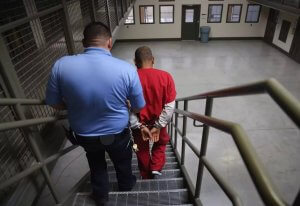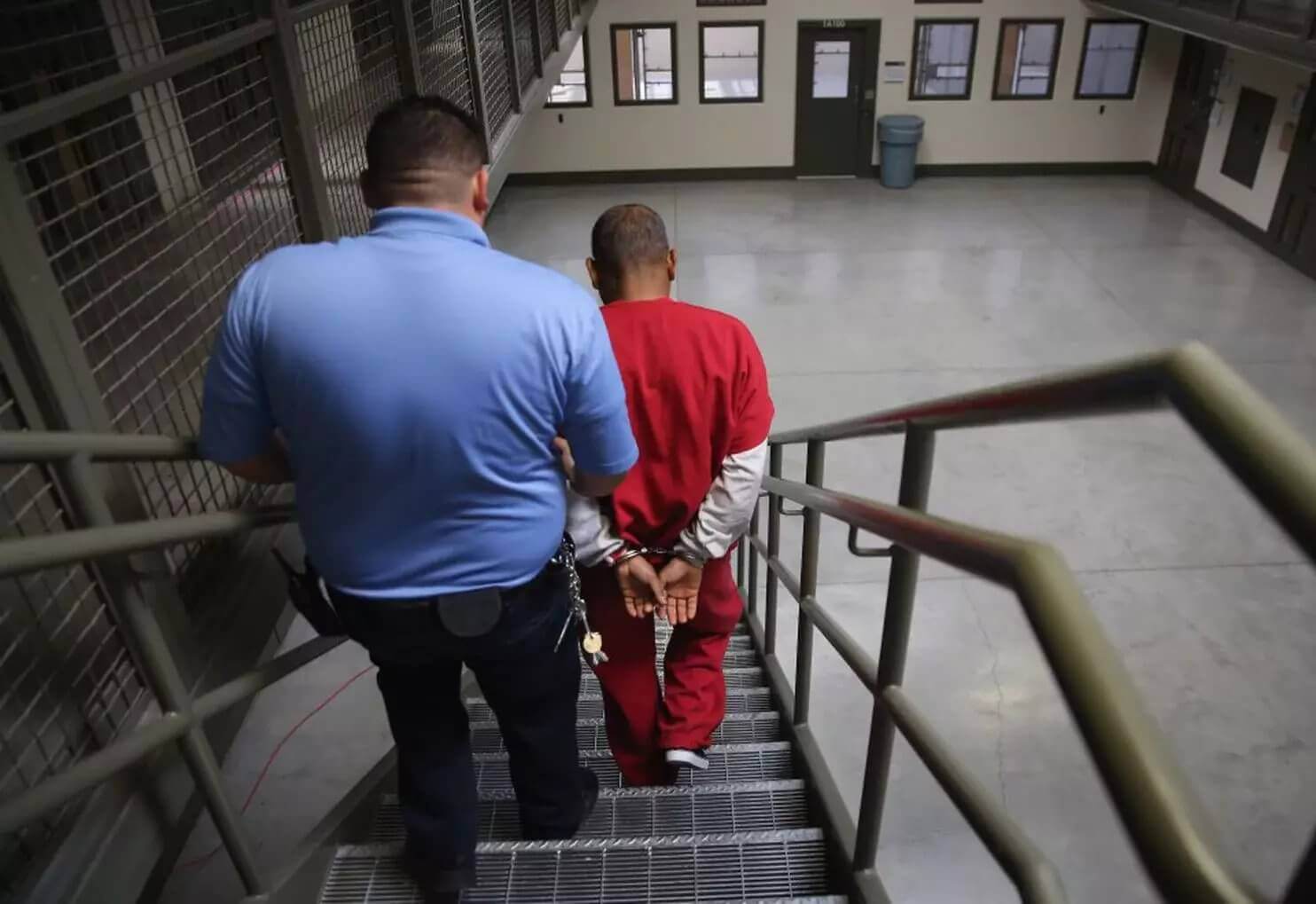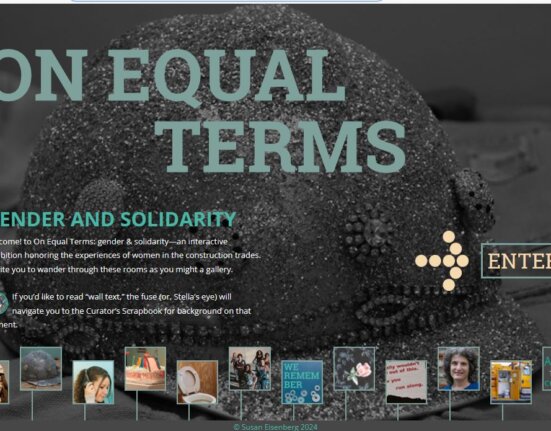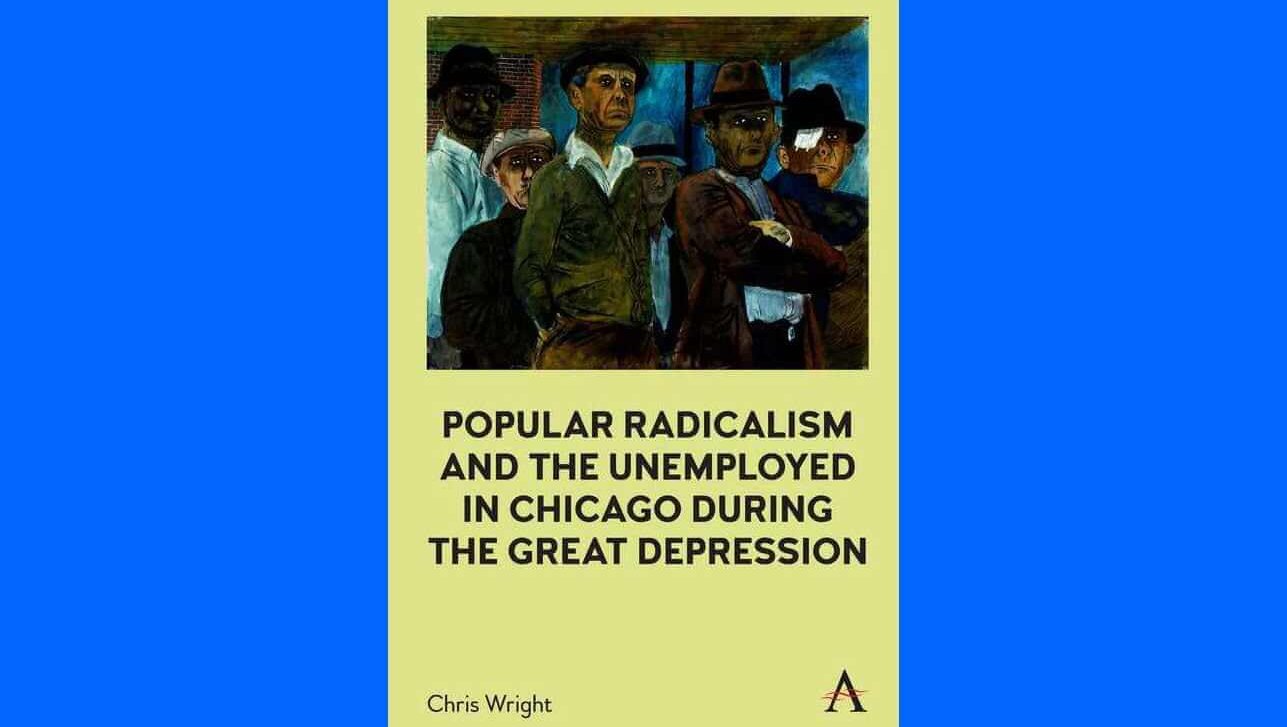President Trump’s recent visit to Southern California to view prototypes for his much-touted border wall drew protests and new pledges by immigrants and their supporters to fight his anti-immigrant policies. But in February, the Supreme Court handed immigration rights advocates a legal setback in Jennings v. Rodriguez — one that is even more daunting than the concrete wall Trump wants to build. This ruling, which upheld the legality of indefinite detention, will aid the Trump administration’s campaign of mass detention and deportation and may grow the already-massive immigration detention system.
While Trump administration officials and a majority of Supreme Court justices appear to agree on the legality and necessity of mass detention for immigrants, six decades ago Supreme Court Justice Tom C. Clark was celebrating just the opposite, pointing to the limited use of immigration detention in the United States as something that “reflects humane qualities of an enlightened civilization.”
So how did the United States transform from a country that rejected immigrant detention on the grounds that it was unnecessary and inhumane into one that imprisons more than 400,000 people every year for immigration-related violations and can legally detain individuals indefinitely?
The answer takes us, perhaps surprisingly, to Haiti. An influx of Haitian immigrants four decades ago resulted in racist and xenophobic opposition at the state and local level, which contributed to a national policy reversal in 1981. Detention became a way to send a message to Haitians that they were unwelcome in the United States. And this criminalization of immigration has since expanded to all potential migrants. Immigration rights advocates don’t just face the challenge of Trump building a wall; they confront a vast, racialized carceral state.
Through the first half of the 20th century, the United States routinely detained migrants seeking to enter the country. But in postwar America, most officials did not regard unauthorized migration as a major threat to the nation. From 1954 to 1981 the United States maintained a policy of “parole” rather than detention, whereby only those judged to be a danger to public safety or health or deemed a flight risk were detained.
These ideas began to change in the mid-1970s, and policy did, too.
Beginning in December 1972, a stream of Haitian “boat people” fled the brutal Duvalier dictatorship in Haiti for the United States. While oppressive, the Haitian regime was an anti-communist ally that the U.S. government did not want to alienate. When state and local officials began to protest the arrival of these overwhelmingly poor and black migrants, the U.S. government classified them as economic migrants rather than as refugees, making them ineligible to receive asylum and remain in the United States. And to deter future asylum seekers from Haiti, the government placed the Haitians in a hastily-assembled network of detention centers, jails and prisons.
A Caribbean refugee crisis in the summer of 1980 further intensified U.S. officials’ fears of being overwhelmed by asylum seekers. In response to the arrival of more than 100,000 Cuban and approximately 15,000 Haitian asylum seekers, the Carter administration established a number of detention camps to hold the newcomers while they were processed. Most of the Cuban detainees were soon freed from detention to join family and sponsors already in the United States. But the many Haitians who did not have such an established community or were denied authorization to be in the country remained in detention.
When Ronald Reagan assumed the presidency in 1981, he took over a government still reeling from the previous year’s refugee crisis. And while the Cuban exodus had largely subsided, the Haitians kept coming.
Hostile to the prospect of an ongoing, large-scale exodus from Haiti to the United States, and wanting to send a message to other would-be asylum seekers from the Caribbean and Latin America, the Reagan administration embraced the tool of detention that it had inherited from the Carter administration. In May 1981, immigration officials began detaining all undocumented Haitians without the possibility of bond. Detention became the new immigration policy, and unauthorized migrants began to be treated as a criminal threat necessitating punishment.

Haitians and their advocates did not accept detention and exclusion without a fight. Inside jails, prisons and detention centers, Haitians staged protests, hunger strikes and outright rebellions. On the outside, Haitians and their supporters built a broad campaign of solidarity with those detained.
They also turned to the courts. In June 1982, a lawsuit brought on behalf of detained Haitians by the Miami-based Haitian Refugee Center struck a major blow against the detention system when a district court judge ruled that the Reagan administration’s Haitian detention program violated the procedures set forth by the Administrative Procedures Act (APA) and was thus illegal. The court ordered the government to restore the “parole” policy.
And yet, this resistance could not stop the punitive turn in U.S. law.
The Reagan administration refused to surrender its detention tool, instead publicizing a new detention policy to ensure compliance with the APA. To defend its detention program from charges that it was discriminatory because it applied solely to Haitians, the government expanded its detention parameters to include all excludable aliens. Soon Salvadoran refugees and immigrants and asylum seekers from around the world began to join Haitians in a rapidly expanding detention system.
The government detention program grew alongside an exploding prison system at home. Growing numbers of citizens and noncitizens alike, drawn largely from communities of color, were incarcerated, ostensibly in the interest of public safety.
In 1996, a pair of new laws further fueled the growth of detention in the United States by breaking down barriers between criminal law and immigration law (traditionally classified as civil, not criminal), and by mandating detention for asylum seekers, an expanded category of “criminal aliens” and those awaiting deportation. After 9/11, the detention regime expanded again, thanks to a new justification — no longer simply a means of preserving public safety but now also as a tool of the expanding national security state.
Opponents of detention didn’t simply roll over. They continued to challenge the detention program in court. In 2001, opponents of immigration detention won a victory in Zadvydas v. Davis when the Supreme Court ruled that immigration law and the Constitution did not permit indefinite detention of immigrants. But the Supreme Court’s recent majority opinion in Jennings v. Rodriguez, which ruled indefinite detention legal while referring the case back to a federal appeals court to address the constitutional issue raised by the earlier ruling, shows how well established the detention system and the logic of detention has become as it has been carried forward by successive Republican and Democratic administrations.
The Trump administration has stoked fear of “criminal aliens” to justify its campaign of mass detention and deportation. The president has disparaged Haitians while simultaneously revoking their ability to legally reside in the United States under temporary protected status. We are in a moment that is strikingly reminiscent of the early 1980s, when fear and hatred of Haitians was used to justify the reinstitution and expansion of immigration detention.
For those who would question the legality, constitutionality and morality of detaining immigrants and asylum seekers indefinitely, there are other historical precedents as well. For two-and-a-half decades in the mid-20th century, the U.S. government did not rely upon detention as a tool of immigration enforcement, on the grounds that it was unnecessary and inhumane. And whether or not the indefinite detention of immigrants is ultimately ruled to be constitutionally permissible, the practice may violate a more universal set of rules, for, as the Office of the United Nations High Commissioner for Refugees observed in 1986, “next to life itself, liberty of the person and freedom of movement are among the most precious of human rights.”
Published originally in The Washington Post, April 9, 2018. Reposted with permission from the author.







